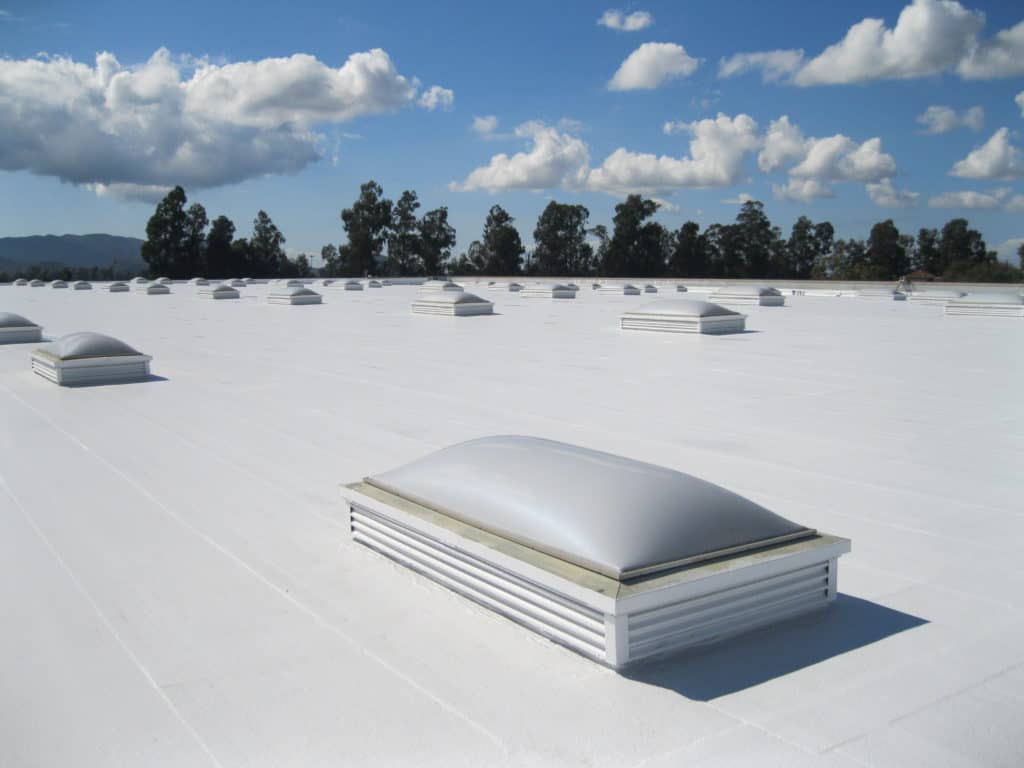
Have you ever wondered why almost all commercial buildings have flat roofs? Well, there is a good reason for that.
Whereas there are commercial building pitched roofs in San Antonio, they are very few in number. It’s very unlikely that you will find such roofs on large commercial buildings.
This guide will discuss why a flat roof makes more sense than a sloped roof on these buildings. Keep reading to discover more.
Difference Between Sloped and Flat Roofs
First, we need to understand what differentiates sloped roofs from flat roofs.
Sloped roofs
Also called pitched roofs, you will find these options mostly on residential homes. This is because they have the attic space directly underneath, which could be useful.
The home’s design determines the pitch of these roofs. They are designed as such to ensure proper drainage. They are better than flat commercial roofs regarding water and ice drain.
However, they are much harder to maintain. Most homeowners will call a professional for any repair work.
Flat roofs
As the name suggests, flat roofs are flat. However, some are not completely flat but low-sloped.
Most commercial buildings have flat roofs because they are cost-effective. You can have a pitched roof on a small residential home because it is affordable. Using the same material on a commercial roof is not practical.

Why Use A Flat Roof on A Commercial or Industrial Building?
Here are reasons why flat commercial roofs make more sense for business owners.
They make space optimization easy
For commercial buildings, space is everything. A business owner will want to get the maximum use of the available space and manage it properly.
This is one factor that makes flat roofs common in many areas. You can use the extra space on top to install HVAC units instead of having it on the ground floor, make storage and do much more. These ideas are impractical on a pitched roof.
It’s less expensive and efficient
Not many commercial properties have sloped roofs because of the installation costs. A flat roofing system requires fewer labor costs since the risks are minimal and there is enough space to do it.
Flat roofing material can last for more than three decades when installed correctly. Even though it can cost a little bit more than a slopped roof, the overall benefits are greater in the long run as a cost-effective option.
Strong and durable
There are many materials used for commercial roofs. These include PVC, EPDM, modified bitumen, and metal. The choice depends on the specific flat roof design and the roofing contractors you hire.
One thing familiar with all flat roofing materials is their strength and durability. Asphalt, for instance, can last for more than 50 years. On the other hand, EPDM uses a vinyl composite to improve heat resistance. That is why many commercial property owners will pick them without hesitation. With proper maintenance, the roof will give you a maximum lifetime.
Good drainage
Slopped roofs on residential homes may have better drainage, but that does not mean commercial low slope roofs are bad. If you are looking to recycle rainwater, flat roofs are a perfect choice.
Property owners install plumbing systems that direct rainwater to specific storage units. Since commercial buildings have flat or low slope roots, it is easier to collect the water. Although this may not be very efficient in draining ice, they still perform impressively.
You can customize your roof design
Even with slightly sloped roofs on commercial buildings, you can customize them for maximum benefits. For instance, you can install air conditioning units or build sky gardens on large buildings. You can install the HVAC systems here and save the ground floor space for efficient air conditioning. On top of that, add solar panels to reduce energy costs.
Excellent curb appeal
The aesthetic appeal in the architecture of a flat roof is on another level. The roof is hidden from the exterior view, allowing the wall design to complement the building for an instant pleasant view. The slight slope of these roofs will make any industrial building very attractive.
If you fly over most business districts, the view is simply amazing. It’s not just the roofs but their varieties and how they are ingeniously installed.
Easy to maintain
The surface area of flat roofs makes maintenance very easy. Commercial property owners choose roofs because there are several things they can do themselves to keep the roofs working. Even if you hired a professional team, you would still get maintenance at a lower cost than on sloped roofs.
Types of Flat Roofs
It’s equally important to know the different types of flat roofs on the market before you install a new one on your property. Here are the most common ones:
- Build up roofing (BUR). This is one of the cheapest commercial roofing options. Multiple layers of industrial-grade fabric felt and paper is used per square foot. Hot asphalt or coal tar is applied for waterproofing.
- Single-ply roofing. This is a cost-effective roofing option that lasts long. It uses materials like EPDM, PVC, and TPO. These roofs are most effective in keeping energy costs down, making them a favorite option for commercial buildings.
- Metal roofing. Metal can last for 30 to 50 years when properly installed. However, it is a bit more expensive, costing about $10 per square foot. It’s most common in warehouses and large industrial buildings.
Flat roofs are the most convenient choice for commercial buildings. The biggest advantage is their cost-effectiveness. You have a roof that’s easy to install, durable, and easy to maintain.
But for you to get maximum benefits, you need to hire professional installers for your new roof. And that is where reputable companies like Bison Roofing come.
